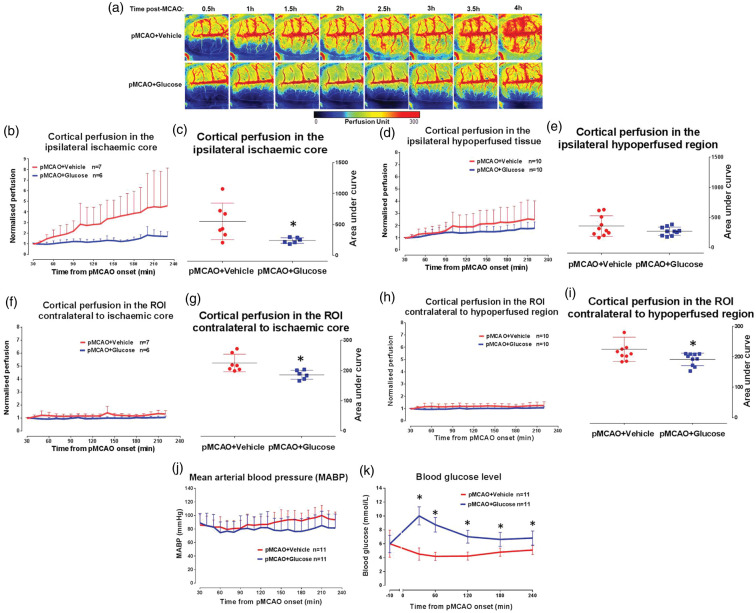Figure 3.
Impact of acute hyperglycaemia on cortical collateral blood flow. (a) Cortical blood flow map of a representative rat per group. (b) Cortical blood flow in the ipsilateral ischaemic core ROI. (c) Area the under curve for cortical perfusion (0.5–4 h) in the ipsilateral ischaemic core ROI of vehicle and glucose groups, p > 0.05*. (d) Cortical blood flow in the ipsilateral hypoperfused ROI. (e) Area under the curve of cortical perfusion (0.5–4 h) in the ipsilateral hypoperfused ROI. (f) Cortical perfusion in the ROI contralateral to ischaemic core. (g) Area under the curve of cortical perfusion in the ROI contralateral to ischaemic core, p > 0.05*. (h) Cortical perfusion in the ROI contralateral to the hypoperfused ROI. (i) Area under the curve of cortical perfusion in the ROI contralateral to the hypoperfused ROI, p > 0.05*. (j) MABP was stable during ischaemia, in vehicle and glucose groups. (k) Blood glucose concentration 10 min prior to and during ischaemia. Data were analysed using repeated measures two-way ANOVA, p = 0.0001*. Area under the curve data for cortical perfusion presented as mean ± SD, other data presented as mean + SD.

